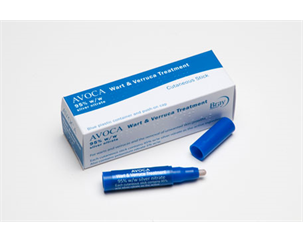Warts & Verrucas
Types
Warts are small growths on the skin and usually harmless. There are different types of wart.
Common warts are round with a rough surface and usually the same colour as skin or brown. Plane or flat warts are smaller and flatter than common warts and tend to occur on the face and hands.
Warts situated on the soles of the foot or around the toes are plantar warts or verrucas.
A verruca starts as a tiny pink area speckled with black dots but can become dark with a rough crumbly layer of skin with a ‘pepper pot’ appearance. Verrucas vary in size and can be as big as half an inch (1.25cm). They can also be grouped together or spread around the foot. Small warts can mass together to form a mosaic wart.
Cause
All warts are caused by infection with the human papilloma virus (HPV). This virus is mildly contagious and can be passed on by direct contact with infected surfaces and towels. HPV thrives in damp, communal areas such as swimming pools and showers and so warts and verrucas are more common in children and young adults.
Over time you develop resistance to the virus if you had warts as a child. Broken skin can increase the risk of picking up the virus. There are 90 different types of HPV.
HPV lives in the surface layers of a wart/verruca. This makes it easier to get rid of warts/verrucas.
Symptoms
Warts may be itchy and unsightly. Verrucas can be painful to walk on and easily confused with corns and callouses. They can appear anywhere on the foot.
Genital Warts
These are pink in colour and often have a cauliflower appearance. Avoca must NOT be used on genital warts.





